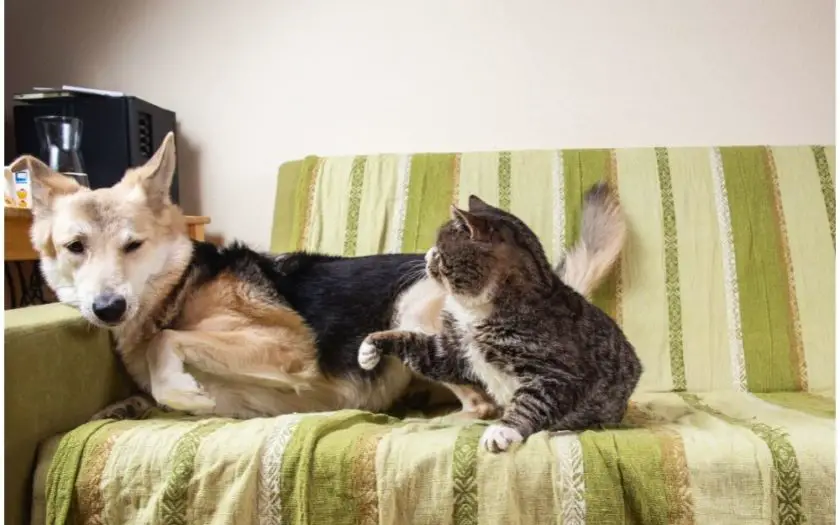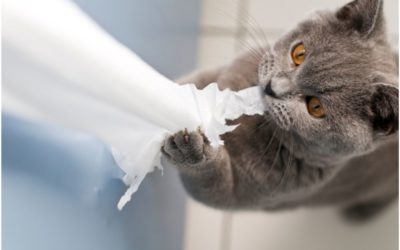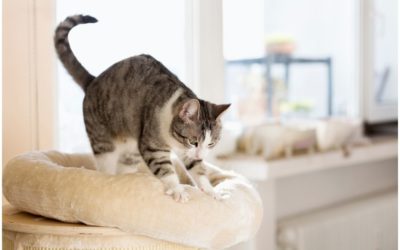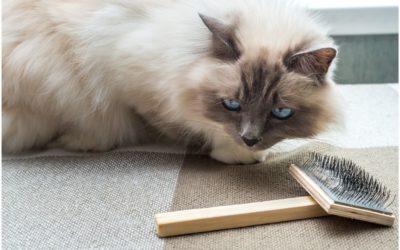So, you recently adopted a canine companion, but your cat isn’t too keen! The web is filled with videos of dogs laying down the law on their cat companions, but cat aggression towards dogs is actually far more common than Youtube might have you believe. Let’s take a look at some of the reasons for such aggression.
Why do cats attack dogs?
Your cat could be attacking your dog for many reasons, from territorial behavior to defense tactics. Luckily, there are numerous strategies you can use to stop the behavior and help your beloved pets get along!
Cats and dogs can appear to be very similar in terms of their behaviors. Yet there is one big difference between them – dogs are pack animals. Think about it. In the wild, most cat species live their lives alone, only coming together to mate. Similarly, you will often find that most pet cats are happy to curl up with each other on occasion but then go their separate ways the rest of the time.
Dogs live, play, hunt, and sleep together, which makes them much more likely to want attention than cats! Dog are also not great at reading the subtle body postures of cats that indicate they want to be left alone! So, is it really a surprise that your cat strikes at a dog that is hounding for a play session?
The trouble is, cats have the potential to do a lot of damage to a dog if you are not careful. This is why it is essential to nip cat aggression in the bud. Dogs frequently get corneal ulcers from being scratched by a cat. Furthermore, bites and scratches can easily become infected. So how do you prevent your cat from attacking your dog?
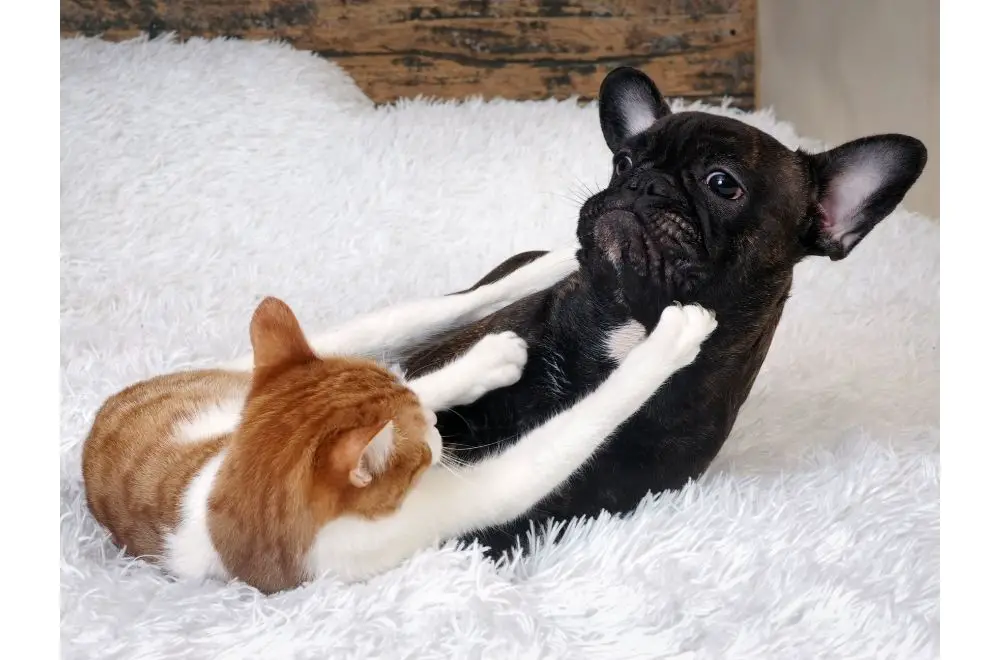
Ultimately, you will need to find the root cause of your cats’ aggression before you can formulate a plan to correct the issue. Aside from miscommunication and personality clashes, there are several other reasons why your cat may be attacking your dog:
Fear
Your cat could become fearful of your canine companion if they have not been introduced properly. A cats’ first instinct is to run away from potential threats. However, if your cat feels cornered then it will switch to plan B, which often involves a paw swipe or bite!
Possessiveness
Is your dog regularly trying to steal food from your kitty’s bowl? Then your cats’ aggression could be territorial. Cats are very particular about their surroundings and can become very possessive of their own items. These can include anything from food bowls and toys to their favorite sleeping spots! This behavior tends to be more prominent in cats that have been raised alone or those that are adopted from shelters.
Redirected aggression
Redirected aggression is a fairly common behavioral issue in cats. It occurs when a cat sees an arousing stimulus (such as a bird through the window) that it cannot get to. When this happens, your cat can take its frustration out on whoever is nearby, which could be your dog or even you!
High prey drive
Young kittens or highly energetic breeds, such as Bengal’s, are prone to this behavior. When your cat is bored, your dog’s swishing tail can seem like a very appealing toy! Stalking, pouncing, and chasing are all part of a cat’s natural predatory instinct. This is typically directed towards small prey animals such as birds and mice. But a particularly bored cat may resort to chasing your dog instead, especially if it is a puppy. This behavior generally indicates that your cat is not getting enough mental and physical stimulation.
Over-stimulation
Have you ever been sat stroking your cat and suddenly it turns around and swipes at you? Due to a dog’s inability to correctly read a cat’s body language, canines can easily receive the same treatment if they push a cat too far!
Incompatibility
So, you have exhausted all potential avenues and your cat is still attacking your dog. In this situation, you may just have to accept that they will never get along. This can happen if you own an older cat and suddenly introduce a bouncy puppy. If the energy levels between your two pets are vastly different, it is unlikely that they will become friends.
How can I stop my cat from attacking my dog?
It can be so frustrating when, despite your best efforts, your cat keeps attacking your dog. Especially when you keep seeing adorable online images of cats and dogs snuggling up together! The good news is that you can achieve canine-feline harmony in your home. You just need a bit of perseverance and a lot of patience. Here are some handy tips to help your cat and dog get along:
1. Give your cat its own space
Provide your cat with a safe retreat to escape from the dog. Cats feel safest when they are up high so, consider investing in a cat tree or installing shelves on your walls to give your cat peace of mind.
2. Create separate areas for both pets’ food and belongings
If you think possession is the cause of your cat’s aggressive behavior, consider setting up separate feeding rooms for your pets. You can also provide your cat with a room that the dog cannot have access too. You can do this by installing a baby gate at the entrance. Make sure the room is filled with plenty of your cats’ favorite toys, a comfy bed, and a scratch post, to reduce the risk of possessive aggression.
3. Provide plenty of play opportunities
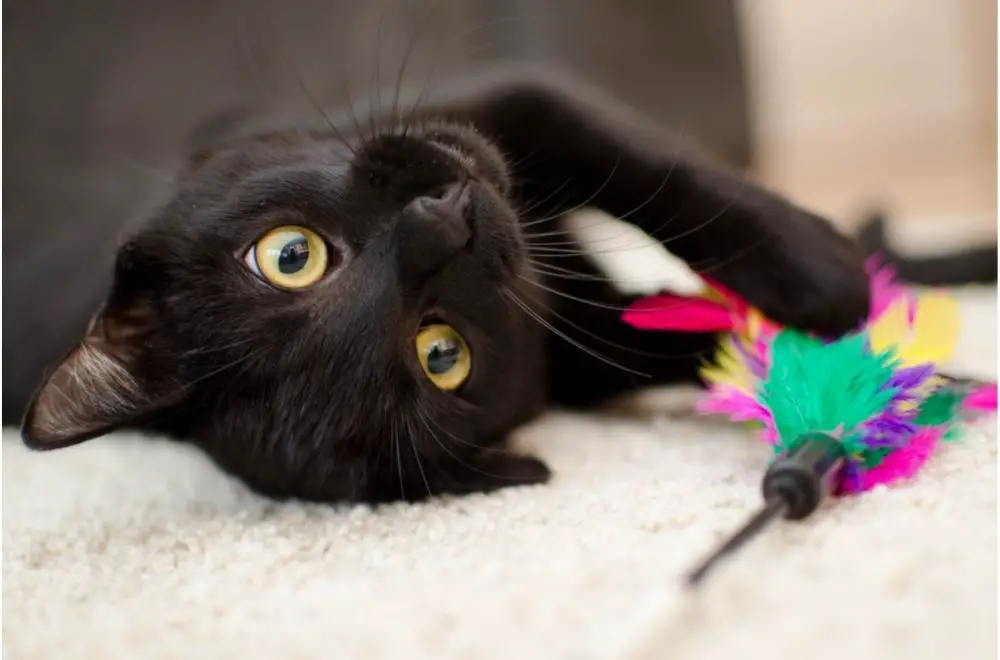
Providing cats with new toys is a great way to release pent-up aggression! Cats are natural hunters so ensure you schedule at least one play session per day, to distract your cat from using your dog as its personal play thing!
Catnip toys also work well and they can be very cheap to make! Simply purchase a bag of catnip from your local pet store. Then place some of the herb into an old sock and tie up the end. Your cat will kick, lick, and drag it around like it’s prey!
4. Help your cat to calm down
Spend some quality time with your cat so it doesn’t get jealous of the dog. You can also try over-the-counter calming products that are specifically designed to reduce feelings of stress in cats.
5. Observe your cats body language
During any interaction between your pets, observe your cat closely. Cats rarely lash out at another animal without first showing subtle behavioral signs and aggressive body postures. Examples include tail swishing, flattened ears, and dilated pupils. If you notice any of these signs in your cat, it means an aggressive outburst is just around the corner. Separate the animals completely until they have had enough time to calm down.
Reinforce good behavior
Whenever your cat interacts calmly with your dog, reward him. This can be in the form of a treat or a bit of fuss. By doing this, you are helping your cat build up a positive association with your dog. Sometimes it can help to have two people in the room, especially in the beginning stages. One person pays attention to the dog whilst the other pays attention to the cat. Then swap over. This will stop both animals trying to get attention from the same person at the same time!
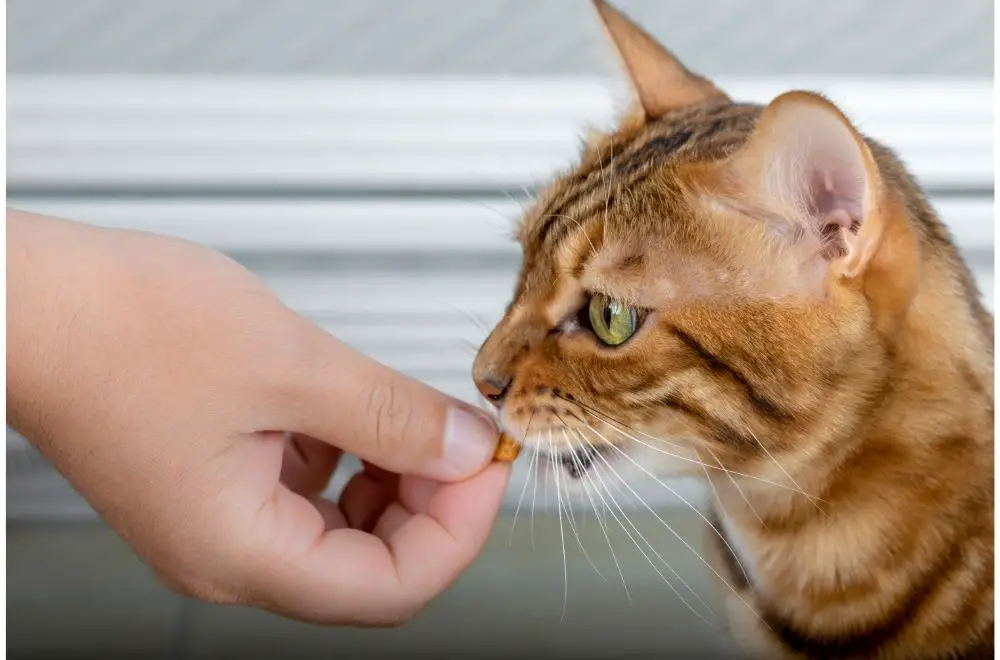
If your cat reacts aggressively towards your dog, you should separate them immediately. Never fuss your cat directly after the incident as this will teach him that aggression gets rewarded! After some time apart, you can then pay attention to your cat. Remember to be patient and never rush an introduction. If you are serious about developing a long-term positive relationship between your cat and your dog, the effort you put in now will be well worth it!
Final word
These tips should help you curb your cat’s aggressive behavior. However, if the problems persist, it may be worth seeking the advice of a pet behaviorist. Even mild aggression can quickly turn into serious aggression. So, it is always better to be safe than sorry!
References
https://www.hillspet.com/pet-care/behavior-appearance/my-cat-hates-my-dog
https://www.maddiesfund.org/cat-aggression-toward-new-dogs.htm#:~:text=Aggressive%20behavior%20towards%20a%20new,aggression%20towards%20a%20new%20dog

